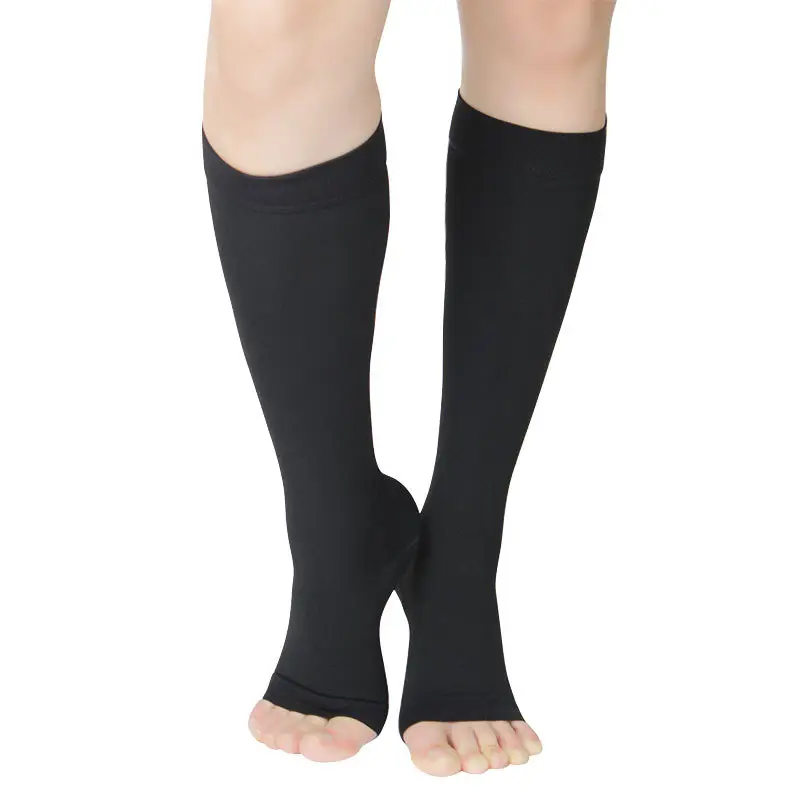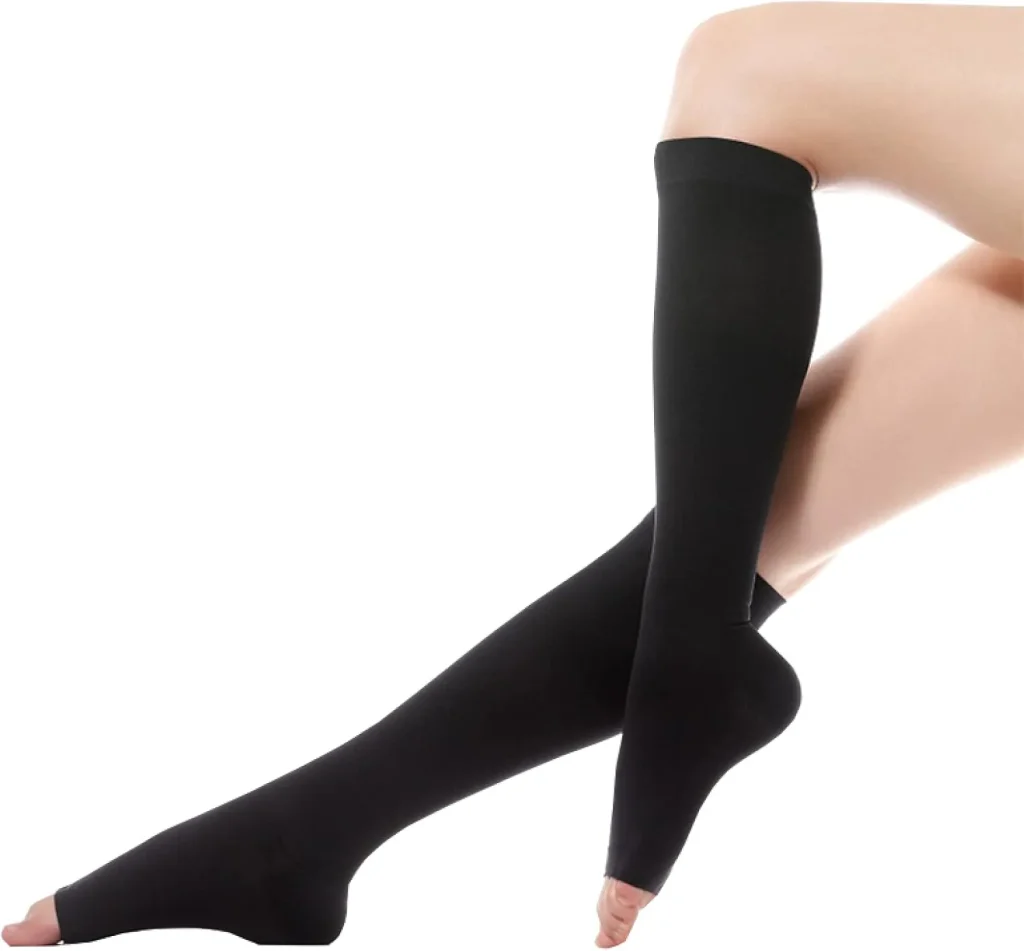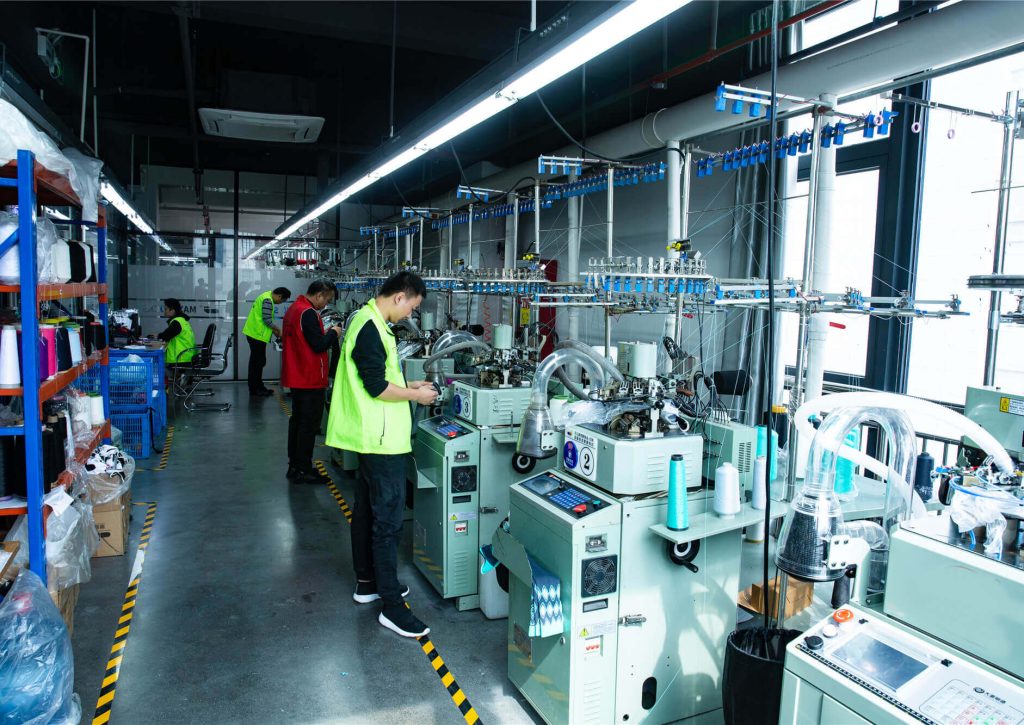Introduction: The Strategic Value of Toeless Support Socks in Healthcare Settings
In today’s healthcare systems, procurement decisions increasingly focus on products that improve patient outcomes and streamline clinical workflows. Toeless support socks meet both goals. They deliver therapeutic compression for circulatory support while allowing toe access for assessments and hygiene — a feature critical in post-surgical care and vascular treatments.

These socks have become standard in many hospitals, outpatient clinics, and rehabilitation centers. Their open-toe design supports better patient monitoring, especially in diabetic, post-op, and long-stay cases. As demand grows, procurement teams must assess not just cost but also quality, fit, and clinical relevance.
This guide offers practical strategies to evaluate suppliers, manage inventory, and implement standardized programs across multiple care sites. Whether you’re sourcing for a single specialty clinic or managing procurement for an entire hospital network, understanding how to select, stock, and distribute toeless support socks effectively can reduce costs, prevent complications, and support better care delivery.
Market Analysis: Understanding the Toeless Support Sock Landscape
Toeless support socks have grown into a critical category in clinical care, especially for vascular and post-surgical patients. For healthcare procurement teams, understanding the supplier landscape and pricing dynamics is key to sourcing effectively.
Supplier Segmentation
There are four main supplier types in this space:
- Medical Device Manufacturers: These companies offer premium-grade socks within broader compression therapy lines. Prices typically range from $15–25+ per pair with low MOQs (100–250 pairs). They provide strong clinical support and staff training, making them ideal for standardization initiatives.
- Specialized Compression Producers: Focused solely on compression products, they balance cost and quality well. Prices range from $12–20 per pair, with MOQs between 250–500. They often offer customizable compression profiles.
- Medical Textile Manufacturers: These offer competitive pricing (from $8–15) by leveraging production efficiencies, though clinical support may be limited. MOQs often start at 500 pairs.
- Private Label Providers: Ideal for healthcare networks seeking branded programs. Prices range from $10–18 per pair, with higher MOQs (1,000–2,500+). They offer exclusivity and higher margin potential.
Pricing Considerations
Volume commitments play a big role. Orders of 500–1,000 pairs may unlock 5–15% discounts, while 5,000+ pairs can bring 15–30%. Some vendors offer performance-linked pricing tied to usage protocols or broader product standardization.
Sock categories typically follow a tiered model: basic (from $8), mid-range ($12–18), and premium ($18–25+). For long-term value, procurement teams should also assess product durability, wash performance, and patient satisfaction scores—factors that impact total cost of ownership and care outcomes.
Understanding supplier positioning and pricing tiers allows decision-makers to balance cost-efficiency with clinical reliability across diverse care settings.
Quality Standards: Establishing Procurement Specifications
Defining precise quality standards is essential for procuring toeless support socks that consistently deliver clinical efficacy while ensuring patient safety, durability, and comfort. Well-structured procurement specifications provide a framework for evaluating potential suppliers and products, helping healthcare organizations minimize risk and maximize therapeutic outcomes.
Compression Levels and Testing
Compression is the core functional attribute of support socks, directly impacting their clinical effectiveness. Different compression levels address varying medical needs:
- Mild compression (8–15 mmHg) supports general circulation and mild edema management.
- Moderate compression (20–30 mmHg) is widely used for chronic venous insufficiency, post-surgical recovery, and ulcer prevention.
- Firm compression (30–40 mmHg) targets severe venous disorders and lymphedema.
Procurement teams should require suppliers to provide objective, laboratory-verified pressure mapping data that demonstrates graduated compression, with pressure gradually decreasing from ankle to calf. This ensures therapeutic effectiveness and patient safety. Acceptable tolerance levels typically range within ±10% for mild to moderate grades and tighten to ±5% for firm compression. Aligning these specifications with clinical practice guidelines from leading vascular and wound care organizations (e.g., American Venous Forum, Wound Care Education Institute) is recommended to uphold evidence-based standards.
Materials and Performance
The fabric composition significantly affects compression retention, comfort, and longevity. High-quality toeless support socks generally consist of a nylon-elastane blend, with nylon providing durability and breathability (70–85%), and elastane ensuring elasticity and shape retention (15–30%). Procurement criteria should mandate durability testing, requiring compression retention of at least 80% after 30 standardized wash cycles, simulating real-world use. Additionally, stretch recovery tests assess whether socks maintain their fit over time, while seam strength testing evaluates resistance to mechanical stress that could cause premature failure.
Advanced sock designs may incorporate functional fibers with moisture-wicking, antimicrobial, or odor-resistant properties to enhance patient comfort and reduce infection risks. When antimicrobial treatments are specified, procurement should detail required testing standards (such as AATCC 100 or ISO 20743), expected efficacy levels, and durability through laundering to ensure consistent performance.
Safety and Comfort
Given prolonged wear durations, especially in clinical and home care settings, the materials must be hypoallergenic and biocompatible to prevent skin irritation or allergic reactions. Suppliers should provide documentation of dermatological testing or certifications confirming skin safety. Moisture management is equally important; socks must efficiently wick sweat away from the skin and dry rapidly to reduce maceration and microbial growth, which are common causes of skin breakdown and infection. Procurement teams should specify performance metrics for moisture handling, validated by standardized tests like ASTM E96 (water vapor transmission) or ISO 12947 (moisture management).
For antimicrobial features, specifying the types of agents used (e.g., silver ions, copper, or specialized polymers) and requiring evidence of sustained activity after multiple wash cycles is vital for ensuring ongoing patient protection. Safety considerations should also include non-slip grip properties where applicable, without compromising skin integrity.
Supplier Evaluation: Developing Selection Frameworks
Choosing the right toeless support sock supplier requires more than checking prices. A solid evaluation framework helps procurement teams find partners who offer consistent product quality, clinical backing, and operational support.

Clinical Validation Matters
Medical-grade socks should be backed by clear evidence. Prioritize suppliers that reference clinical studies—especially randomized controlled trials or cohort research. Even if small vendors can’t provide product-specific trials, they should still demonstrate adherence to proven compression therapy principles. For uses like post-surgery or diabetic care, condition-specific data is even more important. Some facilities create review panels combining clinicians and buyers to vet these claims.
Operational Capabilities Count
Reliable delivery and customer support can make or break a supplier relationship. Look for a proven fill rate above 98%, short lead times, and inventory programs like just-in-time or consignment for high-volume use. Suppliers should offer responsive customer service, dedicated healthcare contacts, and fitting training if sizing is required. Digital integration (EDI, inventory tracking, system compatibility) is now a must for large buyers.
Beyond the Product
Top-tier suppliers often go further—offering patient education tools, compliance tracking, or clinical support kits. For international partnerships, verify their ability to handle customs documentation, meet local regulations, and manage shipping complexity.
Evaluating these clinical and operational aspects helps identify long-term partners—not just vendors—who support both patient care and procurement efficiency.
Procurement Strategies: Optimizing Value and Performance
Hospitals and healthcare systems aiming to source toeless support socks must navigate both clinical requirements and budget constraints. Strategic procurement goes beyond just pricing—it includes long-term supplier partnerships, contract design, and smart inventory planning.
Standardization and Clinical Collaboration
Standardizing sock types across departments helps reduce unit costs by 10–20% and simplifies training, ordering, and inventory control. It also minimizes stockouts and overstock issues. However, full standardization can overlook specialty care needs. A tiered model often works best—core styles for general use, with approved alternatives for specific cases.
Clinician involvement is critical. Procurement teams should work with nursing, rehab, and vascular care units to agree on compression levels, materials, and sizing. Physician preference items may require side-by-side evaluations to reach consensus. For multi-location healthcare systems, standardization enables centralized contracts, better quality control, and smoother distribution.
Smart Contracting and Supplier Relationships
Strong contracts form the base of effective supplier partnerships. Two- to three-year terms offer stability while allowing periodic review. Volume projections with a 15–20% range allow flexibility while supporting better pricing.
Modern procurement contracts often include performance KPIs—fill rate, delivery time, and complaint resolution—with built-in rewards or penalties. Exclusive supply agreements may offer discounts but increase supply risk. Many systems prefer a dual-source approach: 70–80% from a primary supplier, with a backup for emergencies or specialty needs.
Contracts should cover product change notices, stockout response plans, and phaseouts. Top-tier suppliers may engage in joint planning, including inventory improvements or product trials. Well-structured agreements turn suppliers into strategic partners, supporting both clinical goals and cost efficiency.
Inventory Management: Optimizing Availability and Efficiency
Effective inventory management is essential for healthcare organizations to ensure timely access to toeless support socks while controlling carrying costs. Strategic approaches focus on setting appropriate stock levels and choosing distribution models that align with clinical needs and operational efficiency.
Optimizing Par Levels Through Usage Analysis
Establishing par levels based on thorough usage data is the foundation of efficient inventory management. Data should capture routine demand as well as seasonal fluctuations. Products are typically categorized by volume: high-demand core items maintain 2-4 weeks of safety stock, moderate-demand items hold 1-2 weeks, and low-demand specialty products may use just-in-time ordering or centralized storage, especially in multi-site systems. Size distribution is also critical, as medium sizes often represent 50-60% of total demand, with smaller and larger sizes accounting for less. Facilities facing new protocols or demographic changes benefit from more frequent (quarterly) reviews to adjust par levels dynamically, avoiding stockouts or excess inventory. Some implement automated systems that adjust par levels based on rolling averages for more responsive control.
Choosing the Right Distribution Model
Distribution strategies impact both inventory costs and clinical access. Centralized models consolidate inventory in main storage areas, reducing overall stock but may delay access if not managed well. Decentralized models keep stock at multiple points of use, ensuring quick access but increasing total inventory and complexity. Hybrid models balance these by placing core products onsite and specialty items centrally. Automated dispensing machines offer controlled access and automated restocking but require upfront investment. Larger healthcare systems often use hub-and-spoke models to optimize stock across locations. Vendor-managed inventory programs shift stock monitoring and replenishment to suppliers, easing internal burdens. Aligning distribution models with clinical workflows and organizational size helps maintain availability while minimizing costs.
Implementation Planning: Ensuring Program Success
Successful adoption of toeless support sock programs requires thorough planning that balances operational logistics and change management. Clear strategies help healthcare organizations transition smoothly while ensuring lasting benefits.
Clinical Education and Training
Staff education is critical. Training should cover compression therapy basics, product features, sizing, contraindications, and documentation for clinical and reimbursement needs. Use diverse methods such as 30-45 minute in-service sessions during meetings, hands-on workshops, accessible reference materials at points of use, and on-demand videos through intranets. Scheduling must align with clinical workflows and cover all shifts, possibly using recorded sessions or train-the-trainer models for 24/7 operations. Many suppliers offer expert-led initial training and certification programs. Competency checks—like skills assessments and observation—ensure knowledge translates into effective practice.
Monitoring Systems and Metrics
Tracking progress is vital. Monitoring should capture usage volumes, size distribution, and department-level adoption to identify gaps early. Quality audits focusing on proper sizing, application technique, and documentation compliance detect issues before they impact outcomes. Advanced programs include patient outcome metrics such as satisfaction, adherence, complication rates, and comparisons with prior products. Financial reviews assess product costs, staff time savings, reduced complications, and inpatient length of stay. Real-time dashboards support ongoing oversight, while periodic comprehensive reviews inform strategic adjustments. Establishing baseline data before rollout allows clear measurement of program impact.
By combining focused training with robust monitoring, healthcare organizations can maximize the effectiveness of toeless support sock programs, improving patient care while supporting operational goals.
Cost-Benefit Analysis: Justifying Investment Decisions
Healthcare organizations need clear cost-benefit analyses to justify investments in quality toeless support sock programs. These analyses go beyond simple price comparisons, factoring in both direct costs and patient outcome impacts to reveal the true value.
Direct Costs and Operational Efficiency
Evaluating costs means looking past unit prices. High-quality socks last 3-6 months, doubling the lifespan of cheaper alternatives and lowering replacement and procurement costs. Standardizing products reduces purchase orders by 15-25%, cuts inventory tasks by 20-30%, and simplifies staff training. For inpatient care, easy-to-apply socks save nursing time—studies show differences of 2-5 minutes per application, which adds up significantly. Better sizing and protocols reduce waste from unused opened items. Also consider receiving, storage, and packaging disposal costs. When combined, these factors make higher upfront costs justifiable through long-term savings and efficiency gains.
Patient Outcomes and Risk Reduction
Patient outcomes affect the bottom line. Preventing deep vein thrombosis (DVT) with quality compression socks can avoid treatment costs ranging from $5,000 to over $50,000 for severe cases. Compression therapy speeds healing of venous ulcers by 30-50%, cutting clinical and supply expenses. Specialized socks help prevent costly hospital-acquired pressure injuries, which can cost $5,000 to $70,000 per case. For outpatients, comfortable toeless designs improve therapy compliance, lowering complications and readmissions. Using evidence-based, quality products also reduces liability risks. Some healthcare systems employ value analysis frameworks to weigh these clinical benefits alongside costs, helping justify investments in superior sock programs.
Conclusion: Developing a Comprehensive Procurement Strategy
Successful procurement of toeless support socks demands a strategic, multi-faceted approach. Healthcare organizations that move beyond simple transactions to comprehensive strategies tend to see better results in product quality, supplier collaboration, cost management, and clinical outcomes.

The value proposition is clear: effective procurement can reduce complications and related costs while improving operational efficiency through standardized products and streamlined workflows. Leading programs focus on evidence-based product choices that align with clinical guidelines. They cultivate strong supplier partnerships that go beyond price negotiation. Inventory management ensures consistent availability without excess stock. Finally, they use monitoring systems to track both adherence and patient benefits.
For procurement teams developing or enhancing their toeless support sock initiatives, a phased approach works best. Start with a thorough needs assessment and involve key stakeholders early. Next, carefully evaluate and select suppliers. Then, implement training and monitoring to support proper use and compliance. Regular reviews should analyze operational and clinical data to drive continuous improvements.
This methodical process minimizes risks and allows refinement based on real-world experience. Over time, a well-managed toeless support sock program evolves from a simple supply item into a clinical asset that improves patient care and supports efficient operations.
FAQ: Common Questions About Toeless Support Sock Procurement
What are the key differences between medical-grade and consumer-grade toeless support socks?
Medical-grade socks offer tested compression (15–30+ mmHg), durable materials, and FDA oversight. Consumer-grade versions provide lighter, less precise compression, lower durability, and minimal regulation, making them better for comfort than therapy.
What minimum order quantities are typical for customized toeless support sock programs?
MOQs range from 100 pairs (custom packaging) to 2,500+ pairs (fully custom). Higher customization requires larger volumes. Bulk orders reduce cost per unit, though volume discounts vary by supplier and program type.
How should healthcare facilities determine appropriate inventory levels for different sizes of toeless support socks?
Follow a bell-curve distribution: most demand is for medium sizes. Keep 4–6 weeks of stock for core sizes and 2–3 weeks for XS/XL. Monitor usage data regularly to fine-tune stock levels.
What certification or compliance standards should procurement specialists require from toeless support sock suppliers?
Key standards include FDA registration, ISO 13485, and Oeko-Tex certification. International vendors should meet country-specific regulations. ISO 9001 and lab-verified compression tests are strong quality indicators.
How can healthcare organizations calculate the return on investment for premium toeless support sock programs?
Factor in product lifespan, staff time savings, reduced complications (like DVT), and patient satisfaction. Typical ROI ranges from 2:1 to 5:1, with payback in 6–18 months based on volume and impact.
